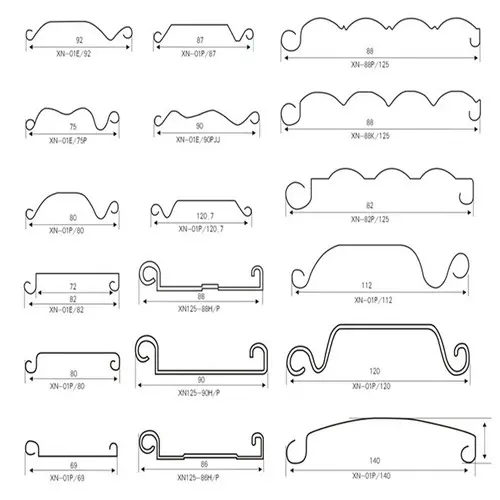
Angle Iron Roll Forming Machine An Essential Tool in Metal Fabrication
In the realm of metal fabrication, efficiency and precision are paramount. One machine that embodies these qualities is the angle iron roll forming machine. This specialized equipment is designed to produce angle iron, also known as L-shaped steel, which finds extensive applications in construction, structural, and manufacturing processes. Understanding the workings and significance of angle iron roll forming machines can provide great insights into modern industrial practices.
What is an Angle Iron Roll Forming Machine?
An angle iron roll forming machine is a device that fabricates angle iron by continuously bending and shaping metal strips into the desired angle configuration. The process begins with a coil of metal, typically mild steel or galvanized steel, which is fed into the machine. Using a series of rollers, the machine gradually shapes the flat strip into the desired L-shape through a series of forming stations. The precise control of the roller angles and spacing ensures that the final product meets stringent specifications regarding dimensions and shape.
The Roll Forming Process
The roll forming process involves several key steps
1. Coil Feeding The metal coil is loaded onto the machine and unwound as it feeds steadily into the roller system. 2. Pre-Bending The edges of the strip might be pre-bent to initiate the angle, helping the metal to transition smoothly through the different rollers.
3. Forming Stations The metal passes through multiple rollers, each designed to perform a specific function in the shaping process. As the strip progresses, it gradually bends into the L-shape.
5. Finishing Touches After cutting, additional processes like punching holes, applying surface treatments, or powder coating might be conducted to enhance the properties of the angle iron.

Applications of Angle Iron
Angle iron is a fundamental component in a variety of sectors. It's extensively used in construction for structural support, providing stability to buildings, bridges, and other infrastructures. In manufacturing, angle iron serves as a key material in the production of frames, brackets, and supports. Its strength, light weight, and versatility make it an essential choice for architects and engineers alike.
Benefits of Using Angle Iron Roll Forming Machines
The angle iron roll forming machines display several advantages over traditional fabrication methods
1. Efficiency The continuous nature of roll forming allows for high-speed production, significantly reducing manufacturing time and labor costs.
2. Precision Automated systems ensure consistent quality and dimensional accuracy, minimizing waste and the need for rework.
3. Versatility These machines can be designed and adjusted to produce various sizes and angles of iron, adapting to different project requirements.
4. Durability of Products The cold forming process enhances the strength of metals, resulting in robust angle iron ready to withstand various loads and environmental conditions.
Conclusion
In conclusion, the angle iron roll forming machine represents a crucial advancement in metal fabrication technology. By combining efficiency, precision, and versatility, it enhances productivity in various industries where angle iron is utilized. As construction and manufacturing processes continue to evolve, the role of such machines will undoubtedly expand, paving the way for innovative applications and designs in the future. Whether in a construction site or a manufacturing facility, the angle iron roll forming machine stands as a testament to the capabilities of modern engineering.